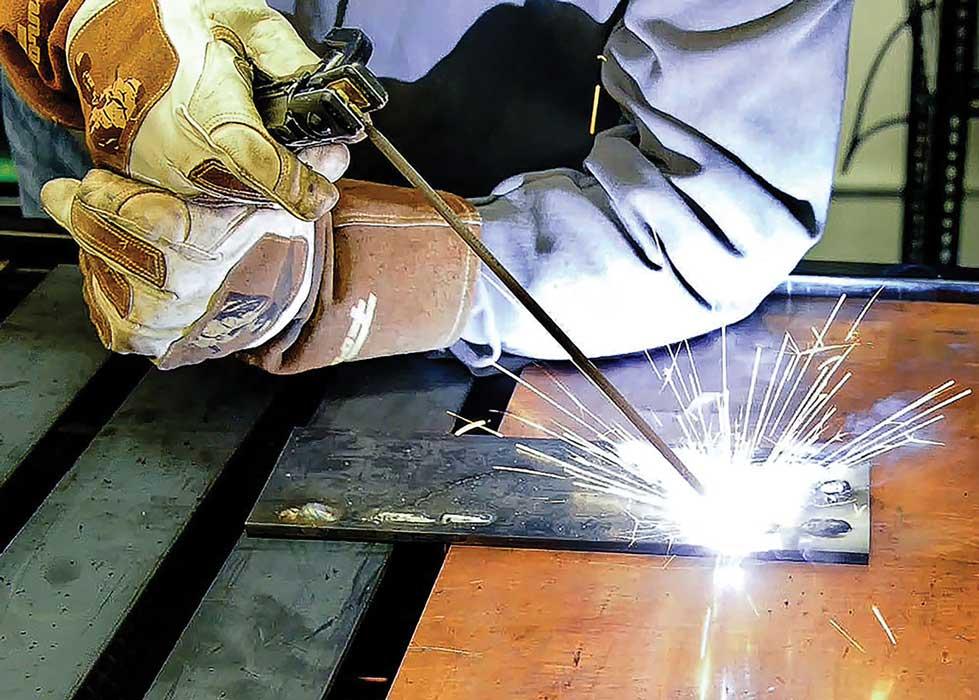Welding WPS: Usual Mistakes to Stay Clear Of and How to Correct Them
Welding WPS: Usual Mistakes to Stay Clear Of and How to Correct Them
Blog Article
Getting Welding Excellence: Introducing the Secrets of WPS Execution and Optimization
In the world of welding, attaining excellence is a pursuit that pivots on the careful execution and optimization of Welding Procedure Requirements (WPS) These foundational documents act as the backbone of welding operations, dictating the treatments and specifications essential for generating high-quality welds regularly. Nonetheless, the keys to unlocking the full capacity of WPS exist not just in comprehending its value but likewise in mastering the complexities of its execution and optimization. By diving right into the key aspects, approaches, challenges, and finest methods connected with WPS, a world of welding excellence awaits those that want to explore its depths.
Value of WPS in Welding
The Relevance of Welding Treatment Specifications (WPS) in the welding industry can not be overstated, working as the foundation for ensuring consistency, quality, and safety in welding operations. A WPS provides in-depth guidelines on just how welding is to be executed, including vital variables such as materials, welding procedures, joint style, filler steels, interpass and preheat temperature levels, welding currents, voltages, traveling rates, and a lot more. By sticking to a distinct WPS, welders can keep harmony in their job, causing constant weld high quality across various tasks.

Secret Elements of WPS
Going over the indispensable components of a welding treatment specification (WPS) is crucial for understanding its function in welding procedures. A comprehensive WPS consists of numerous essential aspects that direct welders in accomplishing top quality and consistency in their work. One critical element of a WPS is the welding procedure spec, which lays out the specific welding processes to be utilized, such as gas tungsten arc welding (GTAW) or secured steel arc welding (SMAW) Additionally, the WPS includes details on the welding products, such as the kind and requirements of the base metal and filler steel to be used. The WPS also specifies vital variables like welding criteria, interpass and preheat temperature requirements, and post-weld warm treatment procedures. Moreover, it consists of details on joint layout, fit-up, and any kind of special strategies or preventative measures necessary for the welding operation. By incorporating these crucial elements into the WPS, welding treatments can be standardized, ensuring top quality, effectiveness, and safety in welding operations.
Techniques for WPS Optimization

Secondly, training and qualification of welding employees according to the particular requirements of the WPS is vital. Providing extensive training programs and guaranteeing that welders are licensed to perform treatments outlined in the WPS can cause better welds and reduced rework.
In addition, leveraging innovation such as welding software program and monitoring systems can help in maximizing WPS. These tools can aid in monitoring variables, guaranteeing specifications are within defined restrictions, and offering real-time comments to welders, allowing them to make instant modifications for boosted weld quality.
Typical Obstacles and Solutions
Facing challenges in applying the techniques for WPS optimization can hinder welding procedures' efficiency and high quality. One usual obstacle is poor training or understanding of the welding treatment specifications (WPS) amongst the welding team. This can result in inappropriate implementation of welds, leading to problems and revamp. To resolve this, comprehensive training programs should be carried out to ensure that all welders excel in applying and interpreting WPS accurately.
One more difficulty is the lack of appropriate paperwork and record-keeping, which is necessary for WPS optimization. Without clear visit this page documents of welding criteria, products made use of, and evaluation outcomes, it comes to be difficult to recognize locations for enhancement and guarantee consistency in welding procedures. Implementing a robust paperwork system, such as electronic welding administration software application, can assist enhance record-keeping and facilitate information evaluation for constant improvement.
In addition, inconsistent welding equipment calibration and maintenance can present a considerable obstacle to WPS optimization. Regular devices checks, calibration, and upkeep schedules should be abided by purely to ensure that welding specifications see here are precisely regulated and maintained within the defined resistances (welding WPS). By addressing these common challenges with positive remedies, welding operations can boost effectiveness, top quality, and overall welding quality
Best Practices for WPS Execution
To make sure successful WPS execution in welding procedures, adherence to sector standards and precise interest to information are extremely important. When starting WPS execution, it is important to begin by thoroughly comprehending the specific welding demands of the job. This requires a comprehensive review of the welding procedure specs, products to be bonded, and the environmental problems in which the welding will certainly occur.
Once the requirements are clear, the next action is to select the suitable welding treatment that straightens with these requirements. This involves getting in touch with the relevant codes and standards, such as those offered by the American Welding Society (AWS) or the International Organization for Standardization (ISO), to ensure compliance and quality.
Furthermore, documenting the entire WPS application process is necessary for traceability and quality control. Comprehensive records ought to be maintained regarding welding parameters, product prep work, preheat and interpass temperatures, welding consumables used, and any discrepancies from the initial treatment. Routine audits and reviews of the WPS can aid recognize locations for enhancement and ensure recurring optimization of the welding process.


Final Thought
To conclude, the execution and optimization of Welding Procedure Specs (WPS) is essential for attaining welding quality. By understanding the crucial elements of WPS, implementing reliable methods for optimization, addressing common difficulties, and complying with ideal techniques, welders article source can ensure premium welds and risk-free working conditions. It is critical for professionals in the welding market to focus on the correct implementation of WPS to enhance overall welding efficiency and achieve desired outcomes.
The Value of Welding Treatment Specs (WPS) in the welding sector can not be overemphasized, offering as the foundation for making certain consistency, quality, and safety in welding operations. A WPS gives detailed guidelines on how welding is to be carried out, consisting of crucial variables such as materials, welding processes, joint layout, filler steels, interpass and preheat temperature levels, welding currents, voltages, travel speeds, and a lot more. One essential aspect of a WPS is the welding process requirements, which lays out the certain welding procedures to be utilized, such as gas tungsten arc welding (GTAW) or protected metal arc welding (SMAW) By incorporating these key aspects right into the WPS, welding treatments can be standard, making sure top quality, performance, and security in welding operations.
It is vital for professionals in the welding industry to focus on the appropriate implementation of WPS to enhance general welding performance and attain preferred outcomes.
Report this page